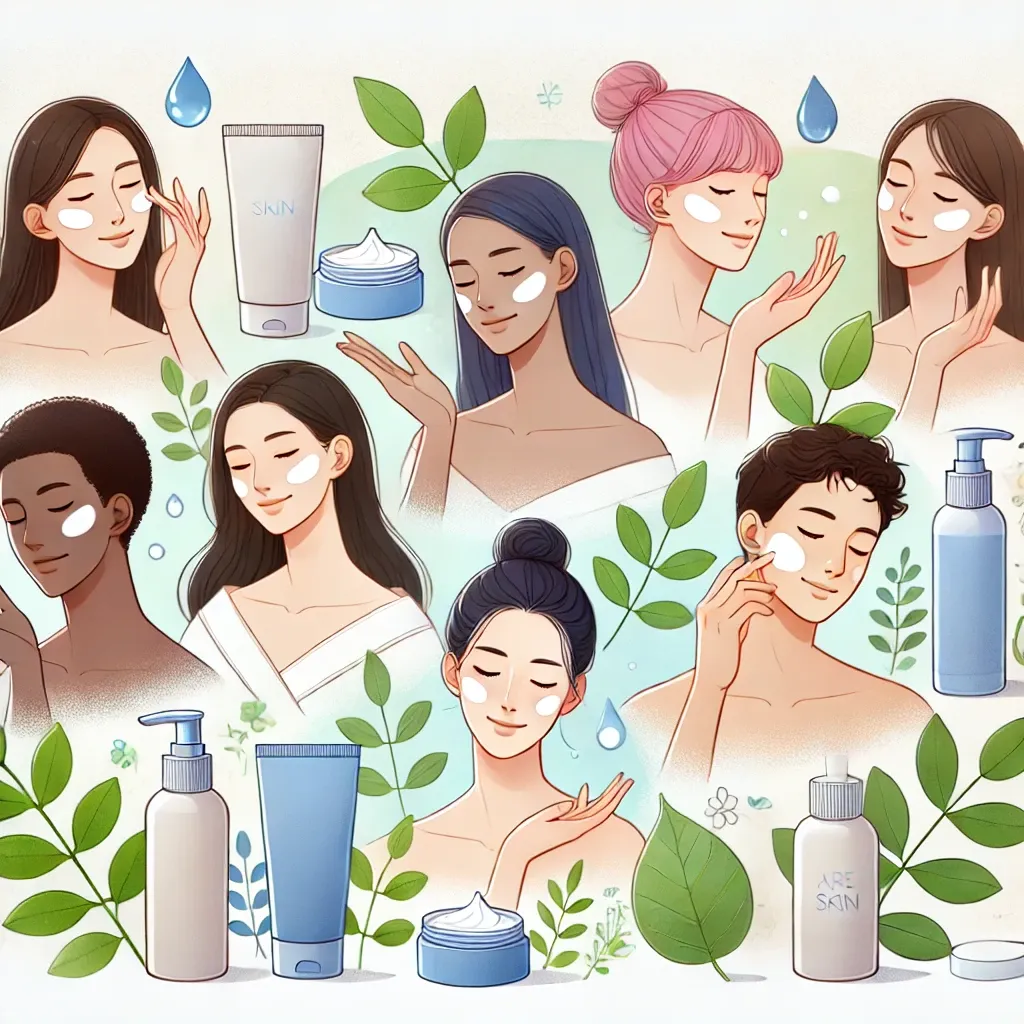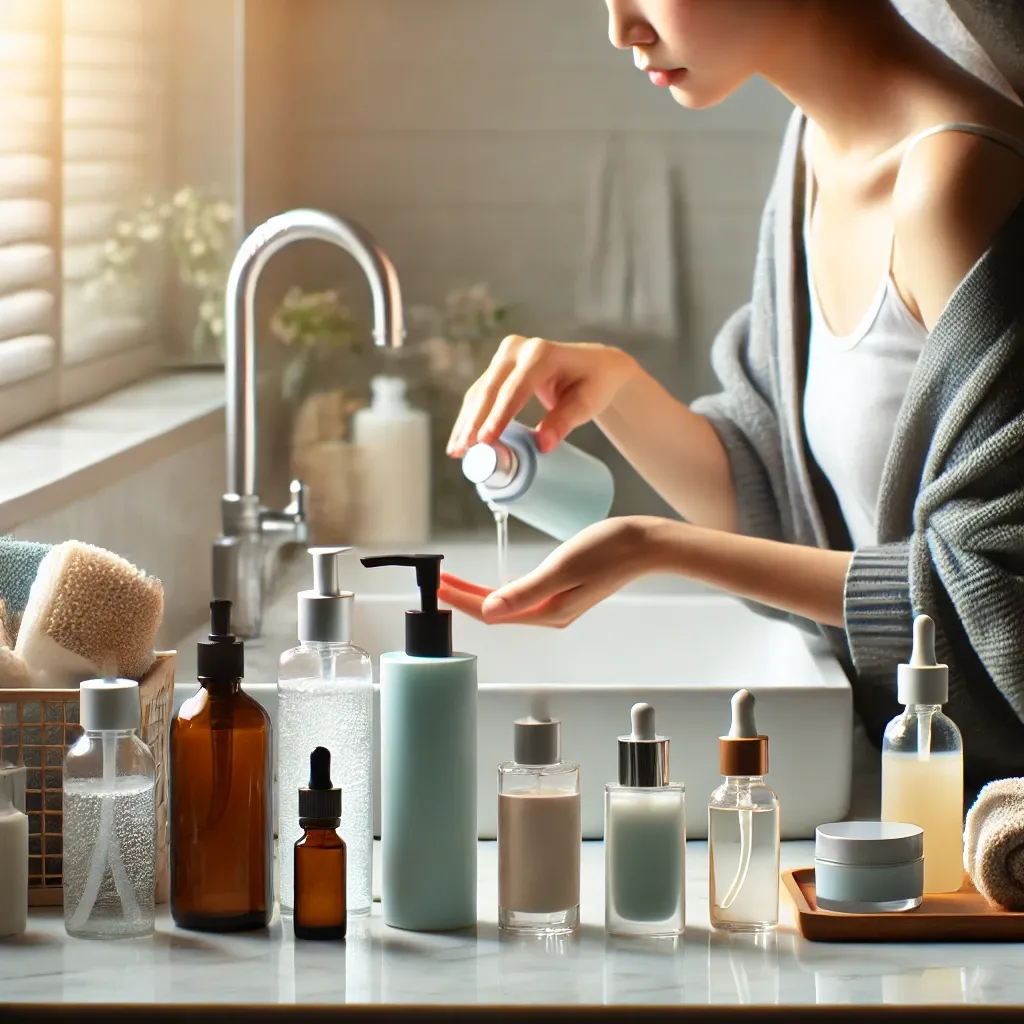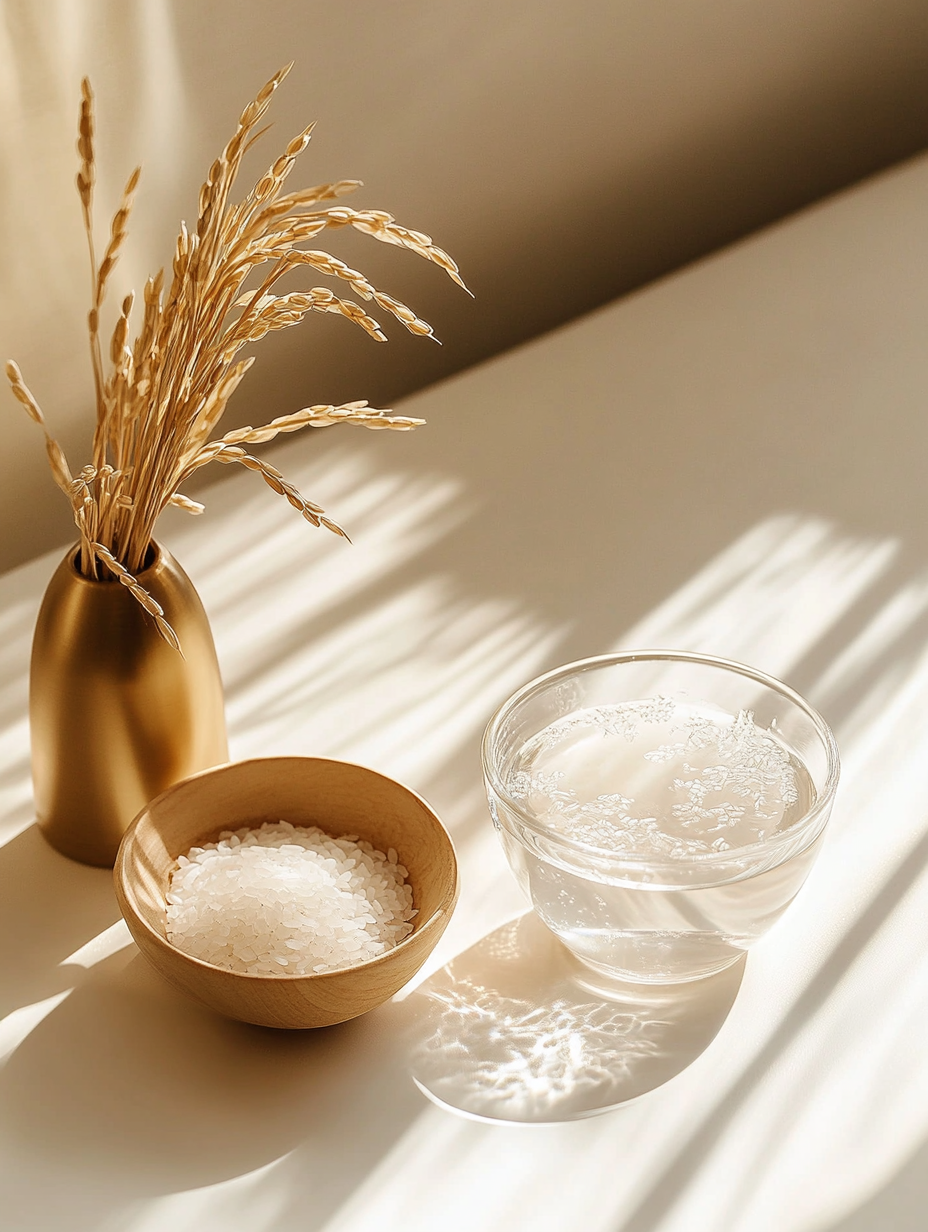Skin Care Products Order: The Ultimate Guide to Maximizing Your Routine for Glowing Skin

In the world of beauty and self-care, few topics generate as much discussion and confusion as the proper skin care order. With an ever-expanding array of products promising miraculous results, it's easy to feel overwhelmed. Should you apply your serum before or after moisturizer? Where does toner fit in? And what about all those specialized treatments?
Fear not! This comprehensive guide will demystify the ideal skin care order, helping you create a routine that maximizes the effectiveness of each product. Whether you’re following a basic skin care routine or an advanced skincare routine, understanding the correct sequence can elevate your regimen to new heights and promote healthy skin.
Why Skin Care Order Matters
Before diving into the specifics, let's address why skin care order is crucial:
- Product Absorption: Applying products in the correct order ensures that each item can penetrate the skin effectively, delivering its active ingredients where they're needed most. For example, applying a thick moisturizer before a lightweight serum would prevent the serum's active ingredients from reaching the deeper layers of your skin.
- Efficacy: The right sequence maximizes the benefits of each product, preventing certain ingredients from interfering with others. Some ingredients work best at specific pH levels or may deactivate others if applied in the wrong order.
- Skin Protection: A proper routine creates a balanced environment on your skin, maintaining its natural barrier and protecting it from environmental stressors. This is especially important for maintaining a healthy skin barrier, which is crucial for dry and sensitive skin types. Using gentle, non-abrasive cleansers and hydrating toners tailored for dry or sensitive skin can help address hydration and soothing needs.
- Cost-Effectiveness: Using products in the correct order means you're getting the most out of each item, ensuring your skincare investments pay off. Expensive serums or treatments won't be as effective if they're not applied at the right stage of your routine.
Now, let's break down the ideal skin care order for both morning and evening routines.
Morning Skin Care Order
Your morning routine should focus on protecting your skin from the day ahead. Here's the step-by-step guide:
- Cleanser
Start your day with a gentle cleanser to remove any oil or sweat that accumulated overnight. Choose a non-stripping formula that won't disrupt your skin's natural barrier. Look for ingredients like glycerin or ceramides that clean without over-drying.
Example: A mild, pH-balanced cleanser with glycerin and aloe vera can effectively cleanse while maintaining skin hydration. - Toner
Often overlooked, toner helps balance your skin's pH and prepares it for the products to follow. Look for alcohol-free formulas with hydrating ingredients like glycerin or hyaluronic acid.
Example: A hydrating toner with rose water and hyaluronic acid can provide an extra layer of moisture while balancing the skin's pH. Another excellent option is a toner with glycolic acid, which offers exfoliating and hydrating benefits, helping to unclog pores and improve skin texture. - Essense(Optional)
If you use an essence, apply it after toner. Essences are lightweight, hydrating products that often contain fermented ingredients or hyaluronic acid to boost hydration and prepare the skin for serums.
Example: An essence containing fermented yeast extract and niacinamide can enhance skin clarity and provide an extra hydration boost. - Serum
This is where you can target specific skin concerns. Vitamin C serums are excellent for mornings, offering antioxidant protection against environmental damage.
Example: A vitamin C serum with 10-20% L-ascorbic acid can provide potent antioxidant protection and help brighten the skin over time. - Eye Cream
The delicate skin around your eyes needs special attention. Use a light, hydrating eye cream to combat puffiness and dark circles.
Example: An eye cream containing caffeine and peptides can help reduce puffiness and fine lines around the eyes. - Moisturizer
Lock in hydration with a moisturizer suited to your skin type. This step is crucial for maintaining skin health throughout the day.
Example: For combination skin, a lightweight, oil-free moisturizer with hyaluronic acid can provide hydration without clogging pores. - Sunscreen
Never skip this step! Apply a broad-spectrum sunscreen with at least SPF 30 to protect your skin from harmful UV rays.
Example: A broad-spectrum SPF 50 sunscreen with zinc oxide and niacinamide can provide excellent UV protection while also offering additional skincare benefits.
Evening Skin Care Order
Your night time routine is all about repair and rejuvenation. Here's the ideal sequence:
- Makeup Remover
If you wear makeup, start with a gentle makeup remover to clear your canvas. Oil-based cleansers or micellar water are effective options.
Example: A cleansing balm with natural oils can effectively melt away makeup and sunscreen without stripping the skin. - Cleanser
Follow up with your regular cleanser to ensure all traces of makeup, sunscreen, and daily grime are removed. This double-cleansing method is particularly important if you wear heavy makeup or sunscreen.
Example: A gel cleanser with salicylic acid can help remove any remaining impurities and provide gentle exfoliation for acne-prone skin. - Exfoliant (2-3 times per week)
Incorporate a chemical or physical exfoliant to slough off dead skin cells and promote cell turnover. Don't overdo it – 2-3 times a week is usually sufficient.
Example: A chemical exfoliant with alpha-hydroxy acids (AHAs) like glycolic or lactic acid can help improve skin texture and tone. - Toner
Just like in the morning, toner helps reset your skin's pH and preps it for the following steps.
Example: An alcohol-free toner with witch hazel and chamomile can soothe the skin and remove any remaining traces of cleanser. - Treatment
This is where you'd apply any prescription products or targeted treatments, such as retinoids for anti-aging or acne spot treatments.
Example: A retinol serum (start with a low concentration like 0.25% and gradually increase) can help improve skin texture, fine lines, and acne over time. - Serum
Night serums can be more intensive than daytime ones. Look for ingredients like peptides or niacinamide to support your skin's overnight repair processes.
Example: A niacinamide serum can help regulate oil production, improve skin barrier function, and reduce the appearance of pores. - Eye Cream
Use a richer eye cream at night to nourish the delicate eye area while you sleep.
Example: An eye cream containing retinol and hyaluronic acid can help address fine lines and hydrate the eye area overnight. - Moisturizer or Night Cream
Finish with a nourishing moisturizer or specialized night cream to seal in all the goodness and support your skin's natural regeneration process.
Example: A night cream with peptides, ceramides, and shea butter can provide intense hydration and support skin repair overnight. - Face Oil (Optional)
If your skin needs extra nourishment, especially in dry climates or winter months, you can add a few drops of facial oil as the final step of your routine.
Example: A facial oil blend with jojoba, rosehip, and marula oils can provide intense nourishment and antioxidant benefits.
The Science Behind Skin Care Order
Understanding the rationale behind this sequence can help you tailor it to your needs:
Cleansing: This step removes impurities that could prevent other products from penetrating effectively. It also helps maintain a healthy skin microbiome by removing excess bacteria and debris.
Toning: Historically used to rebalance pH after harsh cleansers, modern toners often provide a first layer of hydration and prepare the skin for subsequent products. They can also help remove any remaining traces of cleanser or makeup.
Thinnest to Thickest: As a general rule, apply products from thinnest to thickest consistency. This allows lighter formulas to penetrate without being blocked by heavier ones. The molecular size of ingredients in thinner products is typically smaller, allowing for better absorption.
Water-Based Before Oil-Based: Water-based products can't penetrate oil-based ones, so they should be applied first. This is because oil and water don't mix, and oil creates a barrier that water-based products can't pass through.
Active Ingredients: Products with active ingredients (like serums) should be applied closer to the skin for maximum effectiveness. This ensures that these potent ingredients have direct contact with the skin cells.
Moisturizing: Moisturizers help seal in the benefits of previous steps and provide a protective barrier. They often contain occlusive ingredients that create a physical barrier on the skin, preventing water loss.
Sun Protection: Sunscreen should always be the final step in a morning routine to ensure it forms an uninterrupted protective layer. Chemical sunscreens need to be absorbed into the skin to be effective, while physical sunscreens sit on top of the skin to reflect UV rays.

Tailoring Your Skin Care Order to Your Skin Type
While the basic order remains consistent, you may need to adjust based on your skin type:
Normal Skin
Normal skin is well-balanced with even moisture and hydration, uniform texture, small pores, and no apparent problem areas. For those with normal skin, a versatile skincare routine can be followed.
Morning Routine:
- Gentle foaming cleanser
- Hydrating toner
- Antioxidant serum (e.g., vitamin C)
- Lightweight moisturizer
- Broad-spectrum SPF 30+ sunscreen
Evening Routine:
- Oil-based cleanser (if wearing makeup)
- Gentle foaming cleanser
- Hydrating toner
- Nourishing serum (e.g., hyaluronic acid)
- Eye cream
- Moisturizer
Weekly: Gentle exfoliation with a mild AHA or BHA product
Oily Skin:
Oily skin is characterized by excess sebum production, which can lead to enlarged pores, shiny appearance, and increased likelihood of acne.
Morning Routine:
- Gel-based or foaming cleanser with salicylic acid
- Alcohol-free toner with witch hazel
- Lightweight, oil-free antioxidant serum
- Oil-free, mattifying moisturizer
- Lightweight, non-comedogenic sunscreen (preferably gel-based)
Evening Routine:
- Oil-based cleanser (if wearing makeup)
- Foaming cleanser
- Toner with glycolic or salicylic acid
- Niacinamide serum
- Lightweight, oil-free moisturizer
Weekly: Clay mask to absorb excess oil and deep clean pores
Dry Skin:
Dry skin lacks oil and can feel tight, rough, and prone to flakiness. It requires extra hydration and nourishment.
Morning Routine:
- Creamy, hydrating cleanser
- Alcohol-free, hydrating toner
- Hydrating essence or facial mist
- Antioxidant serum with hyaluronic acid
- Rich, emollient moisturizer
- Creamy sunscreen with added moisturizing benefits
Evening Routine:
- Oil-based cleanser
- Cream cleanser
- Hydrating toner
- Hydrating serum (e.g., with ceramides or fatty acids)
- Eye cream
- Rich night cream
- Facial oil
Weekly: Gentle, hydrating mask and very mild chemical exfoliation
Combination Skin:
Combination skin features both oily and dry areas, typically with an oily T-zone and drier cheeks.
Morning Routine:
- Gentle, pH-balanced cleanser
- Balancing toner
- Lightweight, hydrating serum
- Lightweight moisturizer for T-zone, richer moisturizer for dry areas
- Oil-free sunscreen
Evening Routine:
- Oil-based cleanser (if wearing makeup)
- Gentle foaming cleanser
- Balancing toner
- Niacinamide or salicylic acid serum for T-zone, hydrating serum for dry areas
- Lightweight gel moisturizer for T-zone, richer cream for dry areas
Weekly: Clay mask for T-zone, hydrating mask for dry areas
Sensitive Skin:
Sensitive skin is easily irritated and may react to many skincare products. It requires gentle, soothing ingredients and minimal product use.
Morning Routine:
- Micellar water or extremely gentle cleanser
- Alcohol-free, soothing toner (optional)
- Gentle, fragrance-free moisturizer
- Mineral-based sunscreen (zinc oxide or titanium dioxide)
Evening Routine:
- Micellar water for makeup removal
- Gentle, fragrance-free cleanser
- Fragrance-free, soothing moisturizer
Weekly: Gentle, soothing mask with ingredients like aloe vera or chamomile
Acne-Prone Skin:
Acne-prone skin is susceptible to breakouts and requires careful product selection to avoid clogging pores.
Morning Routine:
- Gentle foaming cleanser with salicylic acid
- Alcohol-free toner with witch hazel
- Lightweight antioxidant serum (e.g., niacinamide)
- Oil-free, non-comedogenic moisturizer
- Lightweight, oil-free sunscreen
Evening Routine:
- Oil-free makeup remover
- Cleanser with benzoyl peroxide or salicylic acid
- Alcohol-free toner
- Spot treatment for active breakouts
- Lightweight, oil-free moisturizer
Weekly: Clay mask and gentle chemical exfoliation with BHA
Common Skin Care Order Mistakes to Avoid
- Applying Sunscreen Too Early: Sunscreen should always be the last step in your morning routine to ensure proper protection. Daily sunscreen application is crucial to reduce the risk of skin cancer, wrinkles, and sunspots caused by UV rays.
- Overloading on Products: More isn't always better. Using too many products can irritate your skin and reduce overall effectiveness. Stick to a core routine and add targeted treatments as needed.
- Mixing Incompatible Ingredients: Some ingredients, like vitamin C and retinol, can counteract each other. Research product compatibility or consult a dermatologist. For example, use vitamin C in the morning and retinol at night.
- Not Giving Products Time to Absorb: Wait a few minutes between steps, especially when applying active ingredients. This allows each product to fully absorb and reduces the risk of pilling.
- Skipping Patch Tests: Always patch test new products to avoid potential allergic reactions or irritation. Apply a small amount behind your ear or on your inner arm and wait 24-48 hours.
- Neglecting Your Neck and Décolletage: These areas show signs of aging too. Extend your skincare routine beyond your face to maintain consistency in skin appearance and health.
- Inconsistency: Skin care requires patience and consistency. Stick to your routine for at least 4-6 weeks to see noticeable results.
- Over-Exfoliating: While exfoliation is important, doing it too frequently can damage your skin barrier. Limit exfoliation to 1-3 times a week, depending on your skin type.
- Using the Wrong Products for Your Skin Type: Using products not suited for your skin type can lead to various issues. For example, using heavy creams on oily skin can lead to clogged pores and breakouts.
- Neglecting Hydration: Even oily skin needs hydration. Skipping moisturizer can actually lead to increased oil production as your skin tries to compensate.
Advanced Skin Care Order Techniques
Once you've mastered the basics, consider these advanced techniques:
Layering Serums: If using multiple serums, apply them from thinnest to thickest consistency. Wait a few moments between each application to allow absorption.
Cocktailing Products: Mixing certain products (like a drop of facial oil in your moisturizer) can enhance benefits. However, be cautious and research ingredient compatibility before mixing.
Seasonal Adjustments: Your skin's needs change with the seasons. Adjust your routine accordingly, typically with richer products in winter and lighter ones in summer. For example, you might switch to a heavier moisturizer in winter and a gel-based one in summer.
Weekly Treatments: Incorporate masks or more intensive treatments weekly, adjusting your regular routine on those days. For instance, you might use a hydrating mask once a week or a chemical peel treatment monthly.
pH-Dependent Products: Some products, like vitamin C serums, work best at a specific pH. Apply these products first after cleansing and wait 15-20 minutes before continuing your routine.
Alternating Active Ingredients: To avoid irritation, alternate potent active ingredients on different nights. For example, use a retinoid one night and an AHA the next.

The Importance of Patch Testing and Introducing New Products
When adding new products to your skin care order, it's crucial to introduce them gradually:
- Patch Test: Apply a small amount of the product on your inner arm or behind your ear. Wait 24-48 hours to check for any adverse reactions. This is particularly important for products with active ingredients or potential allergens.
- Introduce One at a Time: Add new products to your routine one at a time, waiting at least a week between introductions. This helps you identify which product might cause issues if you experience a reaction. It also allows you to assess the effectiveness of each new product individually.
- Start Slow: With active ingredients like retinoids or exfoliants, start with lower concentrations and less frequent application, gradually increasing as your skin adjusts. For example, begin using retinol once a week, then twice a week, and so on until you reach your desired frequency.
- Listen to Your Skin: If a product causes irritation or doesn't seem to work for you, don't force it. Everyone's skin is different, and what works for others might not work for you. Pay attention to how your skin feels and looks after introducing a new product.
- Keep a Skincare Journal: Consider keeping a log of the products you use, when you introduced them, and how your skin reacted. This can be invaluable for tracking progress and identifying potential issues.
Skin Care Order for Special Occasions
Sometimes your skin needs extra TLC. Here's how to adjust your routine for special events:
- Day Before
- Do a gentle exfoliation to remove dead skin cells and create a smooth canvas.
- Follow with a hydrating mask to plump and nourish the skin.
- Avoid trying any new products that could potentially cause irritation.
- Morning Of
- Focus on hydration and brightening.
- Use a sheet mask or hydrating serum for an extra glow.
- Follow with your regular skincare routine, emphasizing moisturizing products.
- If time allows, use a jade roller or gua sha tool to de-puff and increase circulation.
- Right Before
- Apply a primer after your skincare routine but before makeup to ensure long-lasting, flawless application.
- Use a facial mist to add an extra boost of hydration and radiance.
The Role of Diet and Lifestyle in Your Skin Care Routine
While topical products are important, remember that skin health also comes from within:
- Hydration: Drink plenty of water to keep your skin plump and healthy. Aim for at least 8 glasses a day, and more if you're active or in a dry climate.
- Balanced Diet: Consume a variety of fruits, vegetables, and foods rich in omega-3 fatty acids for skin-supporting nutrients. Some skin-friendly foods include:
- Fatty fish (salmon, mackerel) for omega-3s
- Avocados for healthy fats
- Walnuts for zinc and vitamin E
- Sweet potatoes for beta-carotene
- Green tea for antioxidants
- Sleep: Aim for 7-9 hours of quality sleep to allow your skin to repair and regenerate. During sleep, your body increases blood flow to the skin and produces collagen, which is essential for skin health.
- Stress Management: High stress levels can exacerbate skin issues. Practice stress-reduction techniques like:
- Meditation
- Yoga
- Deep breathing exercises
- Regular exercise
- Journaling
- Exercise: Regular physical activity improves circulation, helping to nourish skin cells and carry away waste products. Aim for at least 30 minutes of moderate exercise most days of the week.
- Sun Protection Beyond Skincare: In addition to using sunscreen, protect your skin by:
- Wearing protective clothing, including wide-brimmed hats
- Avoid Smoking and Limit Alcohol: Both can contribute to premature aging and skin damage.
- Seeking shade, especially during peak sun hours (10 am to 4 pm)
- Using UV-protective sunglasses
Addressing Specific Skin Concerns in Your Skin Care Order
While maintaining a consistent core routine, you can address specific skin concerns by incorporating targeted treatments:
Acne:
- Use salicylic acid or benzoyl peroxide spot treatments after toning but before moisturizing.
- Incorporate non-comedogenic products throughout your routine.
- Consider using a clay mask weekly to help control excess oil.
Hyperpigmentation:
- Use brightening ingredients like vitamin C, niacinamide, or kojic acid in your serum step.
- Always follow with sunscreen to prevent further darkening.
- Consider adding a gentle chemical exfoliant 2-3 times a week.
Fine Lines and Wrinkles:
- Incorporate retinoids or peptides in your evening routine.
- Use a hydrating eye cream morning and night.
- Focus on hydration and plumping ingredients like hyaluronic acid.
Rosacea:
- Use gentle, fragrance-free products.
- Look for soothing ingredients like niacinamide, aloe vera, and green tea.
- Always use broad-spectrum sunscreen as UV exposure can trigger flare-ups.
Dehydrated Skin:
- Layer hydrating products, starting with a hydrating toner or essence.
- Use a hyaluronic acid serum before your moisturizer.
- Consider using a facial oil as the last step of your evening routine.

The Future of Skin Care: Emerging Trends and Technologies
As skincare science advances, new trends and technologies are emerging:
Personalized Skincare:
- DNA testing for personalized product recommendations
- AI-powered skin analysis for customized routines
Microbiome-Focused Products:
- Probiotics and prebiotics in skincare to support a healthy skin microbiome
Sustainable and Clean Beauty:
- Eco-friendly packaging and ingredients
- Transparency in ingredient sourcing and manufacturing processes
Advanced Delivery Systems:
- Nanotechnology for better ingredient penetration
- Time-release formulations for prolonged efficacy
Conclusion: Perfecting Your Skin Care Order
Establishing the right skin care order is a journey of discovery. While this guide provides a solid foundation, remember that everyone's skin is unique. Pay attention to how your skin responds and be willing to adjust your routine as needed.
Consistency is key – give your routine time to work. Most skincare products need at least 4-6 weeks to show noticeable results. Be patient and gentle with your skin, and don't hesitate to consult a dermatologist for personalized advice, especially if you have persistent skin concerns.
Remember that skincare is not just about appearance – it's an important aspect of overall health and self-care. Taking the time to care for your skin can be a relaxing and rewarding ritual that contributes to your overall well-being.
By following a proper skin care order and listening to your skin's needs, you're on your way to achieving that healthy, radiant complexion you've always wanted. Embrace your skincare journey, and let your natural beauty shine through!



Comments ()